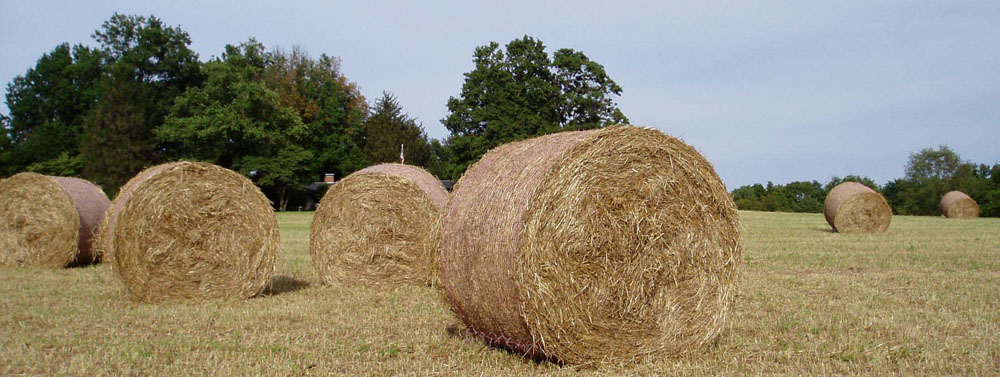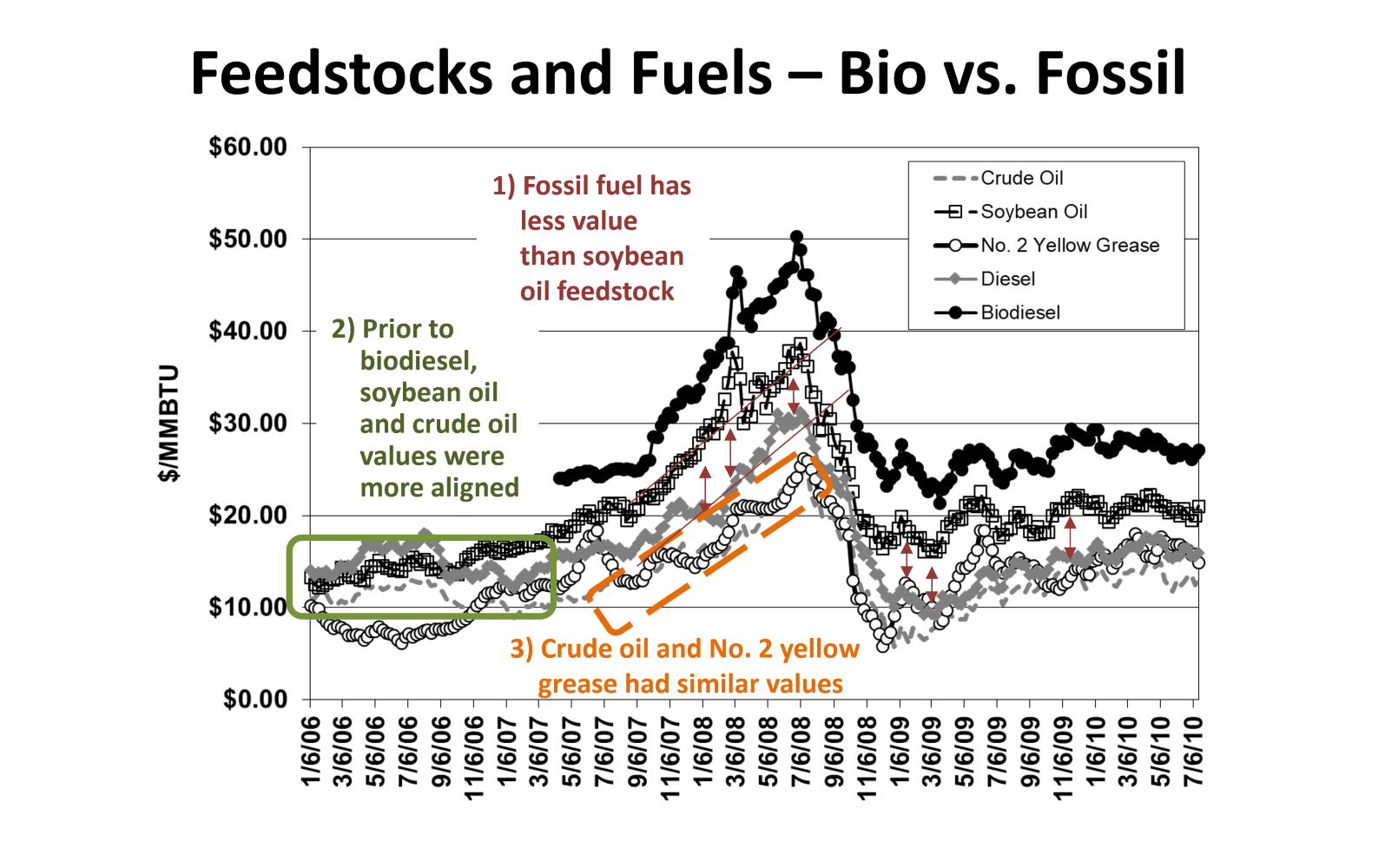Turn-of-the-Century Biofuel-Fossil Feedstock Dynamics
The more things change, it seems the more they stay the same. This Biomass Rules chart with data from 2006, appeared in Chapter 19: Williams, James L. and Mark Jenner. Petroleum Dependence, Biofuels – Economies Of Scope And Scale; US & Global Perspective. Chapter 19 IN Energy and Power Generation Handbook: Established and Emerging Technologies. K. R. Rao. Editor. ASME Press. 2011.
In July, the Biomass Rules energy value calculations were described. Whether it is energy from crops and the sun, primarily used for food and feed, or ancient stored energy in fossil used for transportation, heat, and power – it is all energy. The U.S. Department of Energy posts prices in $/million btu (MMBTU) for coal and natural gas. In 2005, Biomass Rules began converting biomass and other feedstocks and fuels into $/MMBTU values. Since they aren’t market prices, they are simply called energy values. Curiously, the July blog post also inferred that energy values have cycled back to where they were a dozen years prior.
Some things remarkably don’t change.
This chart predates renewable diesel fuel as we label it today. There are three reflections that leap off this chart that are worth sharing.
1) FAME biodiesel soybean oil feedstocks have a higher $/MMBTU energy value than retail fossil fuels.
The finished biodiesel fuels are the highest values on the chart. It seems to make no rational economic sense. FAME biodiesel is relatively low energy-intense stabilization of vegetable oil to biodiesel fuel. Renewable diesel requires much more energy to produce but is easily compatible with fossil diesel. The renewable diesel refining process is also less finicky about the feedstock quality.
Recall that food uses of agricultural commodities command much higher prices than feed or fuel market prices at often ten-times the price. Bidding up the price for soybean oil for food is small compared to the additional increase in price of soybean oil for biofuels.
2) Prior to commercial biodiesel markets, soybean oil and crude oil values were more aligned.
Before biodiesel fuel was a market, soybean oil value had a similar energy value of both crude oil and conventional diesel fuel. Back in the old days, 20 years ago, soybean production was driven by the livestock feed value of soybean meal (nearly 80 percent of a soybean, but low value relative to soybean oil by weight). Expanding the uses of soybean oil drove up the price enough that just 18 percent of the soybean by weight the soybean price has influenced production decisions more than the soybean meal price.
3) Crude oil and No. 2 yellow grease had similar values back in the day
Finally, before the adoption of renewable diesel refining technologies, used vegetable oil, or Number 2 yellow grease, had an energy value in $/MMBTU similar to crude oil. This is why Biomass Rules was tracking used vegetable oil back then. It was a very cost-effective biofuel feedstock. In reality, the variability in quality compared with the narrow standards for transportation fuel made it a risky feedstock for commercial production. The intensity of renewable diesel technologies allows low quality feedstocks to deliver high quality diesel fuel. Now, demand for used oil feedstocks is pulling in recycled vegetable oil from other countries.
What is the criterion for economic success?
- Greater markets for U.S. Soybeans (optimizing domestic agricultural output)?
- Greater markets for U.S. recycle vegetable oil (Does this help U.S. soybean industry)?
- Greater markets for food waste (recycled vegetable oil, no matter its country of origin)?
At Biomass Rules, all of these are legitimately important. Given time and data the case could be made that all three of these are happening. In the long run, even the importation of foreign food waste for U.S. biodiesel production is adding value at the margins for U.S. soybeans. In the short run, this is more difficult to illustrate. Elevating the undervalued waste resources of the U.S. economy is more efficient and we all benefit from this.
Biomass Rules, bay-bee!



Comments
Turn-of-the-Century Biofuel-Fossil Feedstock Dynamics — No Comments
HTML tags allowed in your comment: <a href="" title=""> <abbr title=""> <acronym title=""> <b> <blockquote cite=""> <cite> <code> <del datetime=""> <em> <i> <q cite=""> <s> <strike> <strong>